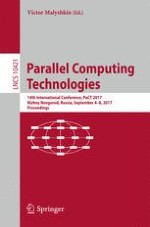2017 | Book
Parallel Computing Technologies
14th International Conference, PaCT 2017, Nizhny Novgorod, Russia, September 4-8, 2017, Proceedings
Editor: Prof. Dr. Victor Malyshkin
Publisher: Springer International Publishing
Book Series : Lecture Notes in Computer Science
